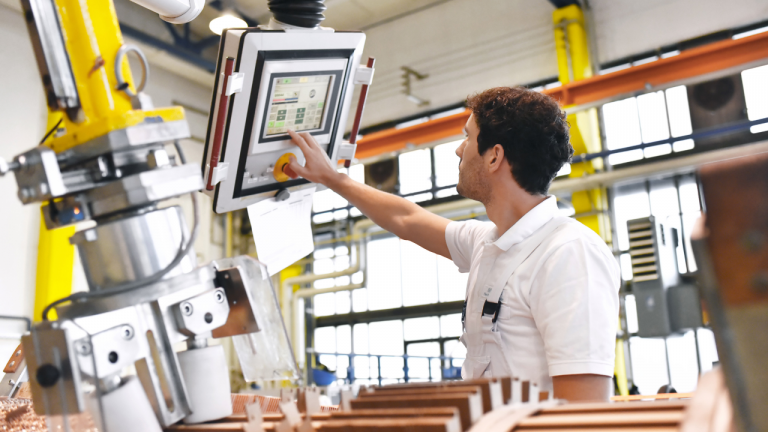How Germany’s Key Industries Can Navigate the Crisis
Germany’s industrial sectors, especially mechanical engineering and automotive suppliers, face significant competitive pressures. High costs, a shortage of skilled labor, and rising energy prices burden companies, along with the shift towards electric mobility. To maintain Germany’s position as an industrial hub, bold steps from both policymakers and businesses are required: innovations must be accelerated, costs reduced, and key location factors fundamentally improved.
Innovation as the Key to Long-Term Success
The German mechanical engineering and automotive industries are characterized by their innovation and adaptability. While mechanical engineering increasingly invests in technologies like digital twins, automation, and Industry 4.0 to boost efficiency and cost-effectiveness, the automotive industry is driving advancements in electric mobility and connected vehicles. To further foster this dynamic, companies could leverage artificial intelligence and smart factory technologies to optimize production processes.
However, the MINT Autumn Report from the Institute of the German Economy (IW) shows that Germany has fallen behind internationally in research and development expenditures relative to GDP. Despite significant increases since 2000, Germany lags behind countries like Switzerland, Sweden, Japan, and South Korea, which have boosted their investments even more.
A major obstacle is the shortage of skilled labor: In 2023 and 2024, Germany is facing a shortage of around 190,000 MINT specialists, especially in energy and electrical professions, as well as in machine and vehicle technology.
To strengthen innovation capacity, open-topic funding programs such as the Research Allowance and the Central Innovation Program for SMEs (ZIM) can provide versatile support:
- Research Allowance: Companies can now receive retroactive funding for their own personnel costs, costs for commissioned research (in collaboration and externally), and also for depreciation of fixed assets. With a maximum assessment base of 10 million euros per year, large companies can currently claim up to 2.5 million euros (funding rate = 25%). Small and medium-sized enterprises (SMEs) now benefit from a bonus, increasing the funding rate to 35% and enhancing the attractiveness of the program.
- ZIM Program: The ZIM supports research and development projects for SMEs with funding rates of up to 60% of project costs. In addition to individual and cooperation projects, innovation networks are also supported to advance research initiatives and strengthen competitiveness.
To fully capitalize on innovation funding opportunities and secure sustainable competitiveness, companies should implement a systematic innovation cycle that centers strategic planning and targeted technology development. This approach involves early identification of technological trends, analyzing their relevance to the business model, and a phased implementation into clearly structured development phases. At the same time, policymakers need to create the conditions for these measures to be implemented quickly and efficiently. This includes the consistent removal of bureaucratic barriers and establishing an innovation- and investment-friendly environment to sustainably strengthen Germany’s position in the global competition.
Nikolai Wiebe, Head of Consulting at EPSA Germany, says: “Innovation is the key to future security. To defend Germany’s leading position in key industries, companies must invest strategically in new technologies – and policymakers should continue to enhance funding programs and reduce bureaucratic hurdles to pave the way.”
Barriers to Germany’s Innovation Location
Several factors hinder the promotion of new technologies and production methods:
- High Bureaucracy: Innovative ideas are often stifled by lengthy approval procedures.
- Shortage of Skilled Labor: Qualified staff are particularly lacking in technical fields, which restricts companies’ innovative capabilities.
- High Innovation Costs: Research and development are costly, presenting a hurdle especially for SMEs.
- Inadequate Digital Infrastructure: Poor broadband connectivity, especially in rural areas, hampers the use of modern technologies.
Boosting Cost Efficiency: Identifying and Implementing Savings Potential
Since the COVID-19 pandemic and geopolitical shifts, the German industry faces the challenge of making its supply chains more robust and less risky. According to the Ifo Institute, 58% of companies diversified their supply chains in 2023 and integrated new suppliers, while 17% increased their manufacturing depth by bringing previously outsourced processes back into the company.
However, optimizing the overall cost structure often takes a backseat, although targeted cost reduction measures can significantly strengthen competitiveness. The potential for cost savings varies widely between industries and companies, depending on their specific starting point and efficiency standards. Therefore, companies must develop individual approaches to analyze their cost structure and implement targeted improvements.
Possible approaches include:
- Energy Efficiency Measures: Optimizing production processes and using modern technologies can reduce energy costs, with savings potentials varying by industry and current technological status.
- Supplier Collaboration: In industries like mechanical engineering, new savings opportunities can be realized through close cooperation and integration with suppliers. In the automotive industry, many potential savings have already been exhausted, so the focus should be more on process optimizations or strategic adjustments.
- Efficient Procurement: Digitalization, bundling of procurement volumes, and strategic negotiations can realize moderate savings, which must be carefully aligned with market conditions.
- Flexible Work Models: Implementing efficient personnel planning, such as home office or variable worktime models, can selectively optimize personnel costs based on the operational structure.
- Digitalization and Automation: Greater automation and the use of data-based analytical tools can make processes in areas like logistics or production more efficient.
The potential for cost savings is real but not universal or unlimited. Each company must individually assess which approaches are feasible based on its specific circumstances and strategic goals. Existing excellence levels are crucial: While some companies are already nearly optimally positioned, others still have significant room for improvement. A differentiated approach and a realistic view of opportunities are essential for achieving sustainable success.
Marc Kloepfel, CEO of Kloepfel Group, notes: “Cost-saving potentials are the hidden treasure of many companies. Systematically leveraging them not only strengthens competitiveness but also lays the foundation for sustainable growth and resilience in uncertain times.”
Conclusion: A Joint Effort for the Location of Germany
The competitiveness of the German industry requires a joint effort. Companies are ready to take risks and invest in research and development – provided that policymakers create reliable conditions. An aggressive reduction of bureaucracy, infrastructure expansion, and a forward-looking strategy for skilled labor and raw materials are essential.
Particularly in the area of skilled labor recruitment, fast recognition procedures, reduced bureaucratic hurdles, and a stronger openness to international skilled workers are crucial. At the same time, free trade agreements should be actively pursued to secure access to international markets and resources.
Only through coordinated action by business and government can Germany maintain its reputation as an innovative industrial location and successfully meet future challenges.
Authors:

Dr. Stephan Hofstetter, Partner, Kloepfel Consulting
 Nikolai Wiebe, Head of Consulting, EPSA Deutschland
Nikolai Wiebe, Head of Consulting, EPSA Deutschland
Editorial: Christian Fischer
Need help reducing costs or optimizing funding? Schedule an info session directly with us!
Kloepfel Group
Damir Berberovic
Tel.: 0211 941 984 33 | Mail: rendite@kloepfel-consulting.com
